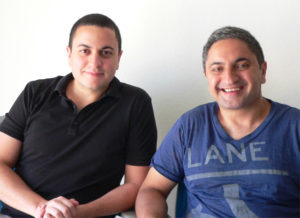Tweeting the Right Way : Success Story of Buffer
With the Internet having expanded exponentially, in the past two decades, it is harder than ever before to keep people engaged. Whether it is a fashion brand or a blog, it is no longer easy to keep customers interested, because there is just so much competition out there. With over 124 billion business emails being sent and received every day, how do companies and brands stay relevant? The only way to stay ahead is to have the right content development and marketing strategy. Having the right digital marketing strategy can now make or break companies, and that is where companies like Buffer help make a difference.
Joel Gascoigne and Leo Widrich founded Buffer in 2010, and it has over the years developed to become one of the biggest players in the social media marketing management niche. The company banked over $1 million in cash recently and even raised more than $3.5 million in the capital. They have also experimented with several things, such as making the hiring and recruitment process a lot more transparent, investing in employee training and even trying out self-management. These pendulum shifts in management did not hamper Buffer but rather contributed to its growth, so much so that, it has over 700,000 users a month now.
The Founders
Being an entrepreneur is not just about mergers, acquisitions and bottom lines, but rather, it is an emotional rollercoaster that is fascinating. No story is more engaging in that aspect than Leo Wildrich’s; the man who co-founded a company that hauls in profits over $10 million a year.

Leo Widrich was born and brought up in the quaint Austrian town of Melk, and dreamt of becoming a professional footballer. Though a part of the football academy in St. Pölten, a knee injury at 15, saw him bid farewell to that dream and focus more on his academics. Once he was done with school in Vienna, his fellow schoolmates inspired him to go to college abroad, and so he did, choosing to attend Warwick Business School. Here, he met Joel Gascoine who, at the time, was working on a prototype for a social media management software. The two friends decided to join forces, and soon enough, the small idea grew till it became a full-time job, which made the pair quit college and move to the Silicon Valley.
Founding Buffer
Seven weeks into the company’s inception, users started paying for the service, and angel investors contributed 400,000 euros just before their personal investment ran out. Buffer, which started off as a tweet scheduling app soon evolved into a social media management app which makes over $4 million a year. Buffer now helps startups manage their Facebook, Twitter, Google Plus and LinkedIn marketing efforts, and has turned into a kind of entrepreneurial necessity.
Initially, Joel wrote the code and Leo Widrich marketed the software. Early on, Buffer had difficulty finding a voice because most top blogs refused to air their pieces. As a result, Leo set up the Bluffer blog and began by writing the blog’s initial pieces. Starting with three articles a month, demand quickly led to him writing over four articles a week. Thus, the wheels were set in motion, and Buffer started gaining momentum. Ten months later, Buffer had more than 100,000 users, and this prompted the duo to leave for Silicon Valley to start their fundraising.
The Success
Following the shift to the US, Buffer started recruiting more writers to keep up with the demand. Over 45 writers posted as guests on Buffer, and slowly yet surely, the tribe began to grow! It was not just the number of writers that grew, but also the frequency of posting. From three articles a month, the Buffer blog now posts almost daily. They got themselves on an AngelPad platform, raised multiple rounds of funding and grew to amass over a million users. The company even acquired Respond to expand their business. Over the years, they revolutionised the industry by bringing forth unique policies that celebrated transparency and even survived a compromising hack.
Presently, the company boasts a team of over 80 employees spread across the world, working in over 15 different countries. Since their early days, Buffer has emphasized on providing a great environment for their employees, and this, in turn, has led to the great employee and customer satisfaction. Having proven their mettle time and time again, the company now helps brands as large as GitHub, Shopify, Huckberry and Microsoft do their business.
Having shaped their entire company policy around customer satisfaction and brand building, helped Buffer grow an extremely loyal customer base of over a million users. Maintaining a high-quality blog has also gone a long way in helping them keep their customers engaged. Most of their blogs now garner up to 4000 shares on Twitter, with some of them occasionally hitting 8000 shares. Hence, it is easy to see that Buffer’s success is mainly due to a well-established and thought of marketing strategy, which is exactly what it helps other companies do!
Leo Widrich’s story is so much more than just a success story, but rather is a testament to the human spirit and is an inspiring tale of pushing and discovering yourself. From travelling the world, enjoying the best of things, Widrich moved to the woods and found himself. More than anything else, this story re-iterates how important it is to stay true to yourself even when it isn’t easy to do so.

Being a cinephile with a love for all things outdoorsy, Athulya never misses a chance to chase inspiring stories or poke fun at things, even when the subject is herself. Currently pursuing a degree in mechanical engineering, she is someone innately interested in technical and scientific research. Music reviews and op-eds define her as they allow her to explore different perspectives. Though sometimes she thinks she makes more sense playing the guitar than she does while writing.



